Description:
Students will conduct ethnographic research of an area in a neighborhood of choice to design an artifact in response to research findings. In teams, students will do preliminary research of the history, socio-economic stance and cultural expression, and then visit the site to conduct first-hand research. teams will collect data in the form of copious field notes, sound recordings, interviews, photographs, and physical samples, if available and relevant. Make sure to activate your senses!
History:
The Hudson Yards is currently being transformed into the Hudson Yards megaproject has functioned as many things in the city’s 400-year history, this area before trains ran alongside pedestrian and other traffic, frequently leading to carnage and the nickname “Death Avenue.” The grade-level tracks were replaced by the freight-carrying High Line in the 1930s. The interesting design Mayor George Opdyke cited New Yorkers’ propensity to jaywalk as a reason to keep the train cars together and persons desirous of crossing a railroad track will wait for the rapid passage of a train of cars without making an attempt to pass over. It seems very dangerous, so in 1910 New York Central Railroad empire change the situation.
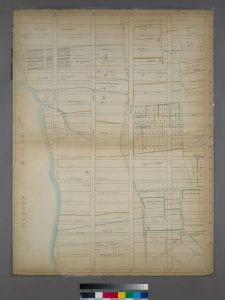
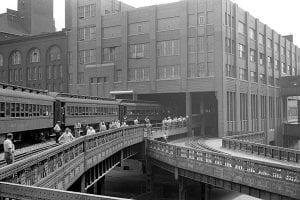

Research:
Hudson Yards has become the cultural center of Manhattan’s New West Side. A template for the future of cities, this new neighborhood has not only changed the way New York looks to the world, but the way the world sees New York. Hudson Yards is New York’s newest neighborhood and home to more than 100 diverse shops and culinary experiences, offices for leaders in industry, significant public art and dynamic cultural institutions.
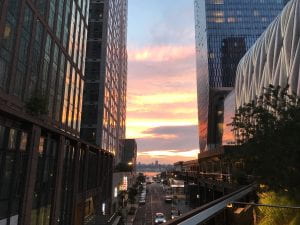
The new neighborhood
Before, I came to Hudson Yards. I never heard about this new area. I just thought it is a new business and financial place. I knew Hudson Yards has a rich and storied past — from the heyday of the Chelsea Hotel, to the city’s hard-working waterfront, to the revitalized food and art scene of Chelsea and Hell’s Kitchen. Hudson Yards is adding to that tradition, propelling the area from it’s industrious past towards a future that will redefine Manhattan.
Located between 10th and 12th Avenues from West 30th to West 34th Street, Hudson Yards has ample connections to commuter rail service, the subway, the West Side Highway, the Lincoln Tunnel and ferries along the Hudson River. The extension of the No. 7 Subway line arrives at the Hudson Yards station, which opened in 2015. I always take 7 train to Long Island city which is very connivence.
Building Hudson Yards
I read some information that Hudson Yards has changed the city’s iconic skyline. Unprecedented and ongoing investment marks Hudson Yards as the nation’s largest private development, and one of the most complex construction projects in the history of New York. Constructed on 28- acres over a working rail yard, two “platforms” bridge over 30 active train tracks, three rail tunnels and the new Gateway Tunnel.

10 HUDSON YARDS
10 Hudson Yards represents the next step towards the transformation of Manhattan’s West Side into New York’s next great neighborhood. 10 Hudson Yards has a direct connection to the celebrated High Line.The tower bridges over the elevated park to create a dramatic 60-foot public passageway that extends through the building. It will also offer a direct connection to the Public Square and Gardens. A good environment for working and live.
50 Hudson Yards
“50 Hudson Yards brings to New York the best of the best.” Stephen M. Ross Chairman and Founder, Related Companies. To work at 50 Hudson Yards means spending your days in the beating heart of New York’s new West Side. Hudson Yards is a model 21st century business and leisure center, drawing life-maximizers of all types residents and professionals, artists and tourists, shoppers and diners with an irresistible symphony of lively activity and refreshing open spaces.
55 Hudson Yards
55 Hudson Yards, designed by A. Eugene Kohn and Kohn Pedersen Fox Associates, is a 1.3-million-square-foot office building located at the intersection of Hudson Yards, the High Line and Hudson Park & Boulevard.he LEED Gold-designed building will stand 780 feet tall with the entrance located just across from the No. 7 Subway station.
The new land mark
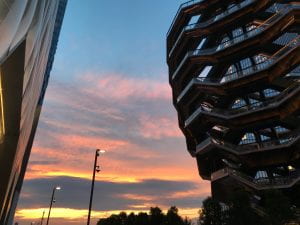
VESSEL
The extraordinary centerpiece of Hudson Yards is its spiral staircase, a soaring new landmark meant to be climbed. This interactive artwork was imagined by Thomas Heatherwick and Heatherwick Studio as a focal point where people can enjoy new perspectives of the city and one another from different heights, angles and vantage points. Comprised of 154 intricately interconnecting flights of stairs — almost 2,500 individual steps and 80 landings — the vertical climb offers remarkable views of the city, the river and beyond.
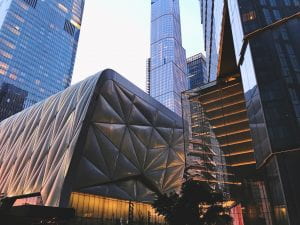
THE SHED
I think the Shed will be the new experience arts center for the New York. The Shed is located where the High Line meets Hudson Yards, adjacent to 15 Hudson Yards and bordering the Public Square and Gardens.The Shed commissions original works of art, across all disciplines, for all audiences. The Shed will brings together established and emerging artists in fields ranging from hip hop to classical music, painting to digital media, theater to literature, and sculpture to dance in an unprecedented movable structure that adapts to support all kinds of inventive work under one roof.

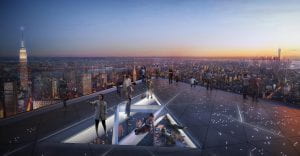
Edge
I expect this building opening for a long time. It will opens in early 2020. Along with being the highest outdoor deck in the entire Western Hemisphere and the fifth tallest in the world! It should be fun and it juts out 65 feet from the building with a glass floor to peer at the city below. Amazing view can’t wait.
Sketch and concept:
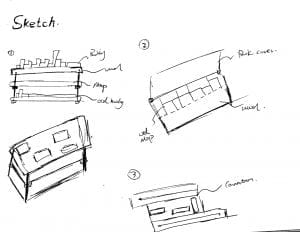
Final Design:
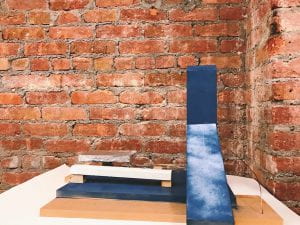

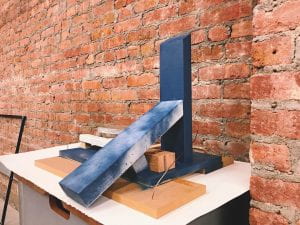
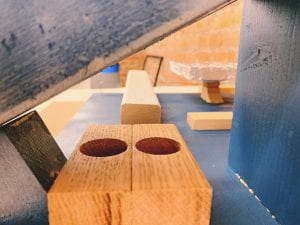
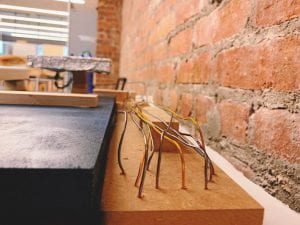
Working Process:
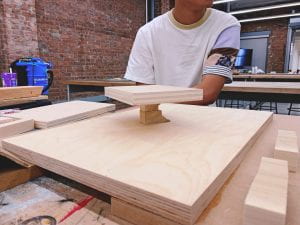
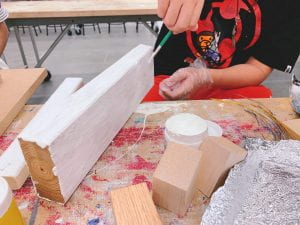
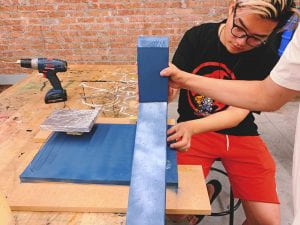
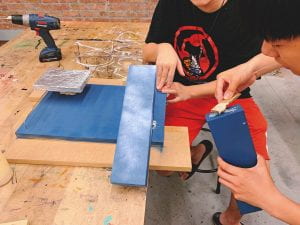
Research Essay:
Hudson Yards is being planned to be “Tomorrow’s City Today”. “Hudson Yards represents the 21st century, and Battery Park City represents the end of the 20th century,” said Mitchell L. Moss, a professor of urban policy and planning at New York University. “They are just totally different.” It will become the cultural center of Manhattan’s New West Side. A template for the future of cities, this new neighborhood which has not only changed the impression of New York towards the world, but also the way of how New York think about the world. It has a special and good location, makes it will be the best developed cultural, business and supervise tourism exchange. However, why this area was chosen with such future proposals.
The Hudson Yards is currently being transformed into the Hudson Yards megaproject has functioned as many things in the city’s 400-year history, this area before trains ran alongside pedestrian and other traffic, frequently leading to carnage and the nickname “Death Avenue.” The grade-level tracks were replaced by the freight-carrying High Line in the 1930s. The interesting design Mayor George Opdyke cited New Yorkers’ propensity to jaywalk as a reason to keep the train cars together and persons desirous of crossing a railroad track will wait for the rapid passage of a train of cars without making an attempt to pass over. It seems very dangerous, so in 1910 New York Central Railroad empire change the situation.
Hudson Yards has a rich and storied past from the heyday of the Chelsea Hotel to the city’s hard-working waterfront to the revitalized food and art scene of Chelsea and Hell’s Kitchen. Hudson Yards is adding to that tradition, propelling the area from its industrious past towards a future that will redefine Manhattan. The neighborhood buzzes with activity and is known for chic art galleries, inviting restaurants and bars, and international fashion and design. The celebrated High Line and the new Public Square and Gardens and Hudson Park & Boulevard will welcome residents and visitors to expansive open green space.
Hudson Yards is a 28-acre mixed-use development on Manhattan’s far West Side, bound by 34thand 30thstreet to the north and south, and by Tenth Avenue and the West Side Highway to the east and west. This area is divided into two parts. The first phase, Eastern Yard, will be eight new buildings including residential and commercial skyscrapers, public gardens, a massive shopping mall, and the Shed cultural center. The Western Yard, on the other hand, will have an additional residential, office, and retail space, as well as elementary school. After 12 years of planning and six of construction, Hudson Yards is composted by 2025,
the built space will contain 18 million gross square feet with 14 additional acres of public open area, as the biggest private real-estate development though U.S entire history. Once it opened, the site’s developers say, Hudson Yards will contribute over $500 million dollars in city tax revenue. Moreover, it is able to host more than 55,752 workers as a daily demand. Expect New York citizens, Hudson Yards has the contribute to be the first small cities, as a cutting-edge model.
Hudson Yards will be the core of Manhattan’s finical, top elites, shopping gathering, and residences of New West Side, as well as the template for the future of cities. The reason why it has the advantages of being the most prosperous area in the future is about its profound history, wide undeveloped space, and the convenient location. A landmark cannot be made in one day.
Refection:
This project at the beginning, we wanted to focus on a book cover with old map as the bottom and the building and some construction on the top, it was really need more time to finish it. So we decided use the third idea, the abstract way to show Hudson Yards ‘s developing. We thought wood has good texture and the original color can represent history and the original view. The nowadays looking and development, the metal blue shows the futuristic feeling to audience. The basic part we almost finish, the next step we wanted to bring the connection between history and future. So yarns were the good choice that can help us, because it has metal texture and it looks hard to break. We use drill to make some holes on the original wood and the blue wood. It was not hard to connect them together. We keep some area and didn’t make any construction there because it means Hudson Yards still developing and the little stair meaning it will make this neighborhood better and better. This project was our first team project, we worked every steps together, it was a useful process with each other. We shared our ideas and selected the final version of the project. I learned a lot during the research.
